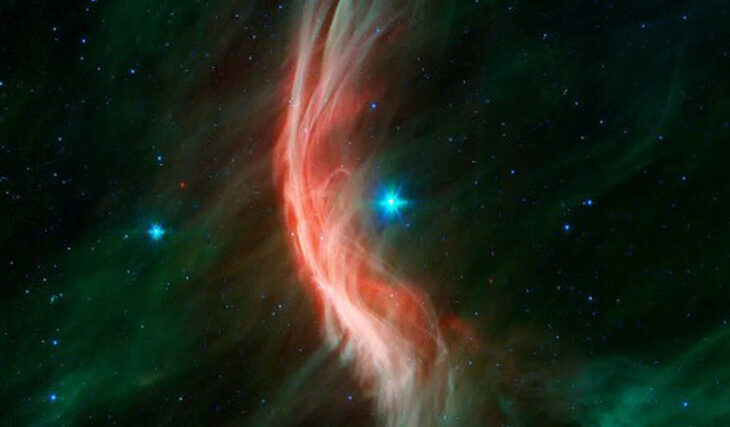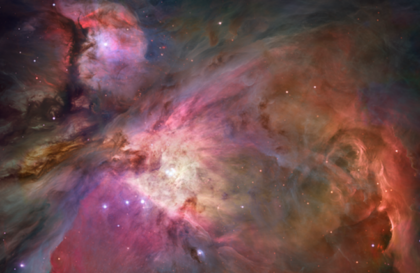For thousands of years, people have wondered about the vast region between stars, sometimes called “empty space.” Scientists call this space the interstellar medium.
Is space empty? How can we know this for sure?
Many people incorrectly believe that outer space is absolute emptiness. However, in fact, outer space, although extremely lofty, is not completely devoid of matter. It contains low-density particles such as plasma, electromagnetic waves, cosmic rays, neutrinos, and other phenomena, including dark matter and dark energy, which are not fully understood. The vast distances between these particles make outer space appear empty, but the presence of these elements proves that this is not the case.
The ability to observe distant galaxies also suggests that there is little material between stars, otherwise it would be able to absorb starlight. Despite this, interstellar space contains gas, making up about 99% of its interstellar medium, but its density is incredibly low. How low?
The air we breathe has a density of approximately 1019 molecules per cubic centimeter. (One cubic centimeter = 1 milliliter = 1/1000 of a liter).
The lowest-density regions of interstellar space contain approximately 0.1 atoms per cubic centimeter.
1% of the interstellar medium is made up of dust, like the kind that accumulates on your bookshelves and under your bed.
Properties of interstellar dust:
Composition: carbon, metals, silicates, and ice.
Grain size: 500 nanometers or less in diameter (1 nanometer = 1 billionth of a meter).
The numerical density of grains is 1 per million cubic meters (this density is equivalent to several specks of dust floating in a football stadium).
The bright white dot near the center of this image is one of the brightest stars in our galaxy. The star is partially hidden behind interstellar dust (pink clouds). Credit: NASA
Half of the interstellar gas is compressed to 2% of the volume of our galaxy. These relatively high-density regions are called clouds or nebulae (“nebula” is simply the Latin word for “cloud”). The densest nebulae can have a density of 10,000 molecules per cubic centimeter (and sometimes more).
The other half of the interstellar gas is distributed over the remaining 98% of the galaxy’s volume. The lowest-density gas has a density of 0.1 atoms per cubic centimeter or less. (By the way, the Solar System is located inside a sizeable low-density bubble in the interstellar medium.)
How can we confirm the presence of the interstellar medium?
At times, we are aware of the presence of the interstellar medium due to its ability to emit light. For example, emission nebulae are ionized clouds of high-temperature gas surrounding luminous hot stars whose surface temperatures reach tens of thousands of degrees. The ultraviolet radiation from these stars heats the gas in the nebulae, which, in turn, due to its high temperature and low density, emits light in the form of emission lines.
We can confirm the presence of the interstellar medium by its ability to block light. Thus, a dark nebula is a cool, thick cloud of gas and dust, which is replete with dust. This cloud is so saturated with dust that it becomes impenetrable to light that comes in the visible spectrum.
Absorption Lines through an Interstellar Dust Cloud: When there is a significant amount of cool interstellar matter between us and a star, we can see the absorption lines of the gas in the star’s spectrum. We can distinguish the two kinds of lines because, whereas the star’s lines are broad, the lines from the gas are narrower. Credit: NASA’s Jet Propulsion Laboratory
Therefore, if a dark nebula is located between us and distant stars, it hides them from our eyes, creating the impression of empty space or a “black spot” in the starry sky. At the same time, dust inside the dark nebula can absorb light from stars and re-emit it in the infrared so that a nebula invisible in normal light can be detected when observed in the infrared spectrum.
Sometimes, our knowledge of the existence of the interstellar medium is based on its ability to reflect light. Reflection nebulae are cosmic clouds of dust that surround stars, and they are visible because dust grains reflect starlight. The light reflected by the nebula appears blue, regardless of the actual color of the star. This is due to the fact that dust particles whose size is comparable to the wavelength of visible light reflect blue light more effectively than red light.
NGC 1999, a reflection nebula in the constellation Orion. Credit: NASA and The Hubble Heritage Team (STScI)
Consequently, reflection nebulae take on a bluish tint because reflected blue light dominates our eyes. Stars seen through such a veil of dust appear red because the blue light from their glow has been scattered. Similarly, the blueness of our daytime sky is due to the scattering of sunlight by the Earth’s atmosphere. When the sun sinks towards the horizon, the sky turns red and orange because blue light is scattered at a greater distance, leaving light in our field of view in which longer waves predominate.
Space – Universe
Space is an endless void where all the acts of cosmic drama unfold. We call this space itself the Universe, and the Universe is inextricably linked with the concept of space. The region of space that we can see spans 90 billion light years and includes everything we can detect, from planets and their moons to stars, galaxies, and the entire spectrum of electromagnetic waves.
Interestingly, space has properties similar to those of an elastic trampoline. Einstein argued that space is capable of deformation and bending under the influence of mass, which explains the phenomenon of gravity. Without mass, space returns to its original state – it becomes smooth and flat.
Let’s remove matter from the Universe
Let’s imagine that we can extract all the matter from our Universe. If we were to start by removing visible matter, we would face an unknown side of the Universe, consisting of invisible components such as dark matter and dark energy. Let’s go further and get rid of these dark elements. What then appears before us? There will be nothing left, only emptiness. But this assumption may be wrong.
Having eliminated all matter, both dark and light, from the equation, we expect that only the emptiness of the Universe will remain. However, modern theories suggest that such a “emptiness” does not exist. To find the answer, we must delve into the world of quantum physics. At this scale, we encounter phenomena demonstrating that outer space is teeming with activity and is not nearly as tranquil as it seems.
Credit: NASA
In the picture above, you can see wave-like structures representing fluctuations in a quantum field. These bursts of energy in the quantum field give rise to a pair of particles – one of matter and its mirror counterpart of antimatter. When these particle and antiparticle collide, they destroy each other, releasing the same energy back into the quantum field, which guarantees the conservation of energy.
Einstein argued that in the absence of mass, space is smooth and even. However, looking at these complex shapes filling space demonstrates the complexity of reality. It is this fact that makes it so difficult to reconcile the two most potent theories humankind has ever created: quantum physics and Einstein’s theory of relativity. The theory of relativity perceives space as continuous and flat, while quantum mechanics describes it as something far from smooth and complete of energetic disturbances. String theory is the most promising model for unifying them so far, but it still has a lot to prove.
Interestingly, many attempts to solve this mystery focus on trying to fit physical reality into a measurable number of atoms in a certain volume of space. However, atoms themselves consist overwhelmingly of “empty” space. Take, for example, the hydrogen atom, which is almost entirely empty: if it were enlarged to the size of the Earth, the proton at its center would be only about 600 feet (200 meters) in diameter. And our body is also 99.9999999% empty.
This is misleading because, in essence, we appear solid and whole.
Banner image: In this infrared image from NASA’s Spitzer Space Telescope, winds flowing out from a fast-moving star (Zeta Ophiuchi) are making ripples in the dust in interstellar space. Credit: NASA/JPL-Caltech
Image credit:
https://www.nasa.gov
https://curator.jsc.nasa.gov
https://courses.lumenlearning.com
https://www.nasa.gov
https://www.nasa.gov


